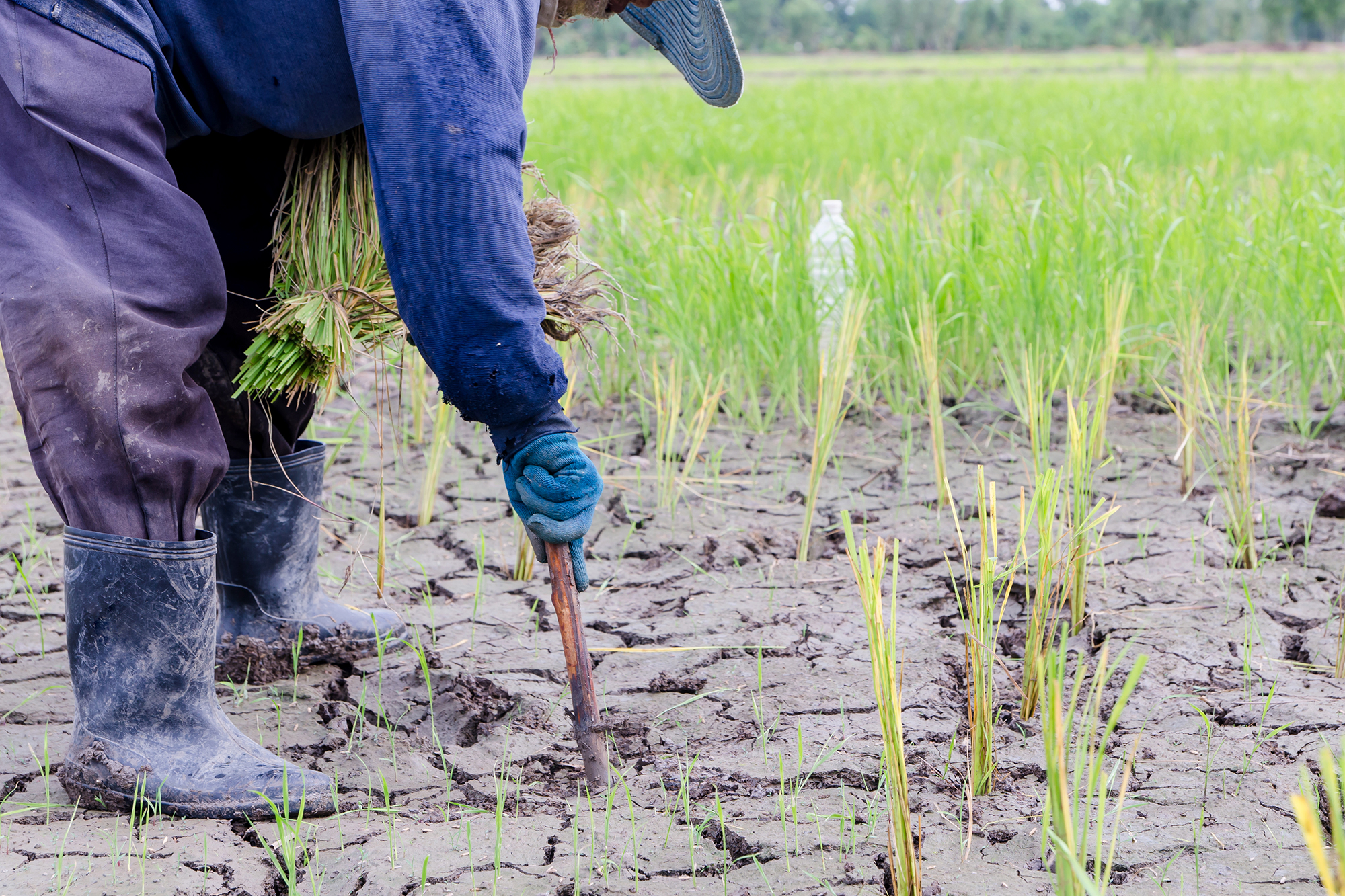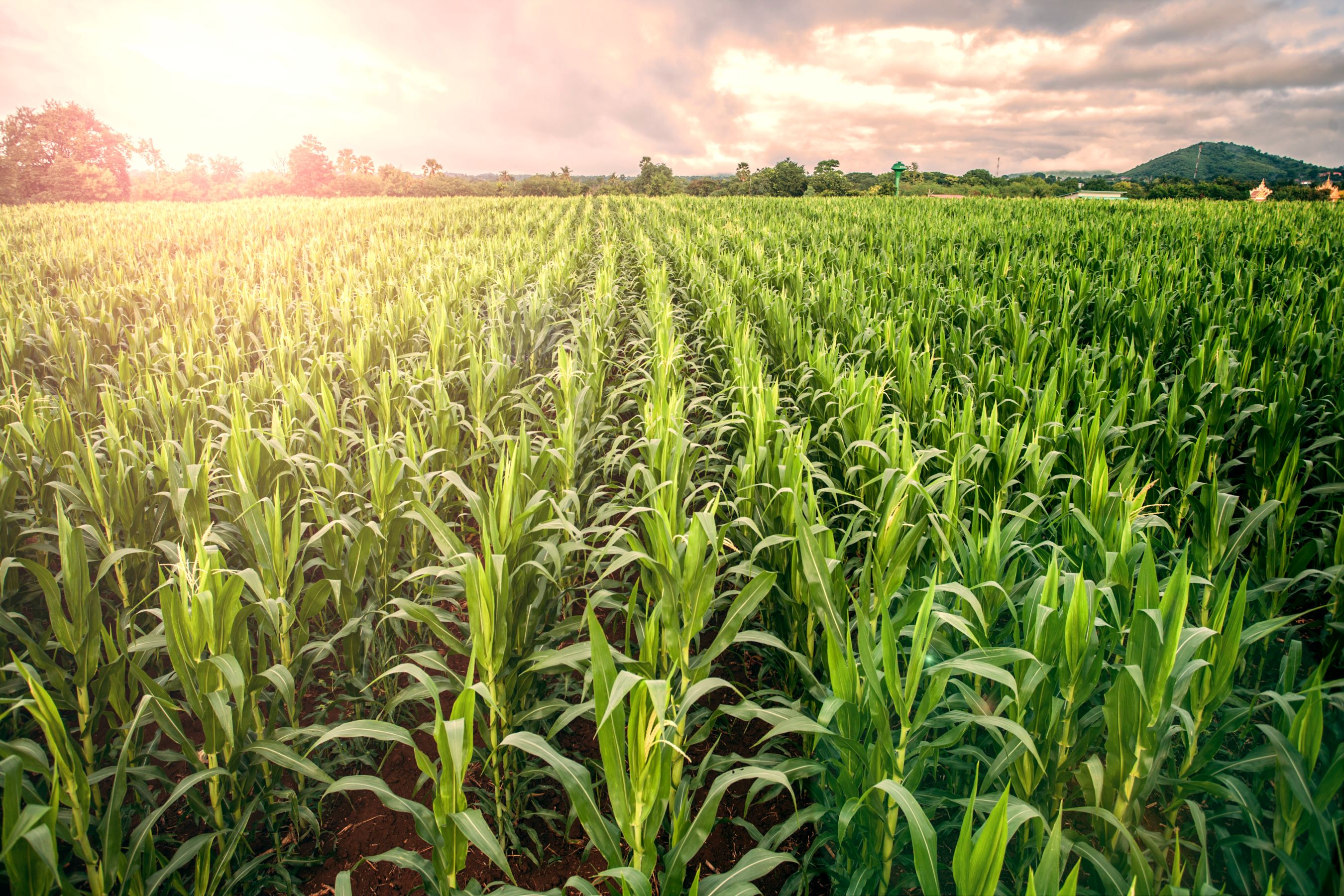Climate resilient food systems - WCSSP case study
Through the WCSSP Programme, researchers around the world are improving our understanding of the current and future climate risks to globally important crops including maize, tea and sugarcane.
Agricultural systems are highly dependent on weather and climate. Through the Weather and Climate Science for Service Partnership (WCSSP) Programme, researchers are developing tools and services that can provide farmers and decision makers with the information they need to manage these risks and increase the resilience of these systems in the future.

Monitoring agricultural drought risk in Brazil
Agricultural drought occurs when a lack of soil moisture, either due to a shortage of rain or other factors, impacts agricultural activities such as crop growth. This can lead to a loss of food and income for agricultural communities.
Drought can be monitored in several ways through sensors, satellites, or computer models. As there are limited long-term datasets of soil moisture, land surface models can help fill gaps in information and provide information on future drought risk.
The National Center for Monitoring and Early Warning of Natural Disasters in Brazil (Cemaden) established a network in the Brazilian semiarid region of more than 600 on-farm sensors gathering valuable observational data on soil moisture every hour.
Through a project funded by the Climate Science for Service Partnership (CSSP) Brazil, researchers from the UK and Brazil utilised the data to assess the soil moisture values calculated by aland surface model known as JULES. The researchers found that JULES correctly identified drought events over the Brazilian semiarid region.
“This research highlights the importance of using information from different sources such as computer models and observational data to reduce the uncertainty of drought assessments.” Dr Marcelo Zeri, Researcher, Cemaden

Development of a drought monitoring tool for Brazilian agriculture
In addition to scientific publications, the collaboration between scientists in Brazil and the UK has led to the production of a digital platform that provides information on regions in Brazil that are experiencing drought stress. The digital platform shows changes in space and time in drought indices produced by Cemaden which include the changes in rainfall, soil moisture in the root zone, and vegetation stress.
The platform uses data from satellites and weather stations to provide information for four different types of agricultural drought indices. Users can look at the current month’s data as well as historical data to visualize and understand the drought patterns of any given location in Brazil. The tool is designed to be used by a range of audiences, from agronomists and farmers to local and national policymakers.
“Since the launch of the platform in January 2022, it has had over 150,000 views from over 6,000 unique users. Recent funding will allow us to expand the capabilities of this interactive tool, exploring new applications of machine learning for drought forecasts.” Marcelo Galdos, Senior Research Scientist, Rothamsted Research
Research and services to support the global maize industry
Maize is an important global crop produced both for human and animal consumption. Maize relies predominantly on rainfall to grow, making production susceptible to climate hazards, such as drought. The United States and China combined provided over half of the world’s maize in 2021 and unexpected decreases in maize production could negatively impact prices, trade, and global food security.
Through the Climate Science for Service Partnership (CSSP) China project, researchers from the Met Office studied the risk to global maize production due to extreme weather events in the present day. They found that there is a 6% risk per decade of maize crop failure simultaneously in China and the USA which is known as a multi breadbasket failure.

In addition to studying the current risks to maize production, researchers from the Met Office are working in collaboration with the Beijing Climate Centre to develop a prototype seasonal forecast for the climate impact on maize yield in northeast China, one of the world’s key regions for maize production.
Maize yield at the province-scale is impacted by summer temperature and rainfall, with too much or too little having negative effects. Based on this relationship, scientists have developed a forecasting approach which identifies the likely impact of the observed summer climate on maize yields in each province. The forecast can be issued in July, August, and September ahead of crop harvest in October and ongoing work is exploring approaches for extending the forecast lead time.
Developing prototype forecasts
The first prototype forecasts were produced with colleagues at the Beijing Climate Centre in 2022. Further research is being conducted to look at extending the forecast so it can be issued earlier in the year which will enable it to inform more decisions, and to investigate the potential impacts of climate change on maize yield in this region by the middle and end of the century.
“We could apply the approach to explore a method for estimating the climatic growth of maize to help decision makers, including farmers, to counteract the risks associated with climate variability.” Peiqun Zhang, Senior Scientist, Beijing Climate Centre.
Studying the influence of climate on tea in the UK and China
The province of Yunnan, Southwest China, is one of the biggest producers of tea in China. Scientists at the Met Office and at Yunnan University have been talking to tea experts and local farmers in Yunnan to understand what seasonal and climate information they need to inform their business decisions.

As tea plant cultivation and harvesting are very sensitive to extreme climate events, scientists have been studying how different rainfall indices impact tea growth, quality and price. A collaborative CSSP China paper, led by Yunnan University, found that an increase in consecutive dry days and rainfall during summer and autumn is particularly detrimental to annual tea production, yield and raw price.
Scientists are using the findings from the study to investigate whether there is seasonal forecast skill in predicting these metrics in tea-growing areas. This information may enable tea growers to plan for the coming months as well as adapt to future climate scenarios.
The tea team at the Met Office are also exploring how climate information can benefit the developing tea industry in the UK. Climate change could have the potential to influence the ability to achieve a sustainable tea yield in tea growing areas across the region.
The project's information pack provides an overview of the impact of climate change on tea.


